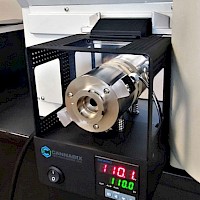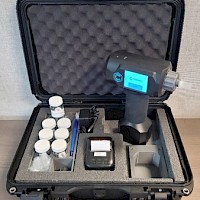Because the field of breath analysis has been devised fairly recently, there are few standardized methods available, and these carry limitations. Existing breath sampling methods rely on adsorption of the analyte of interest, followed by desorption by either heat or solvent extraction. This is then followed by liquid or gas chromatography and mass spectrometric analysis. Many analytes of interest, however, have unique chemical properties, such as low volatility, that result in extremely low collection efficiencies using these methods.
The Cannabix Mass Spectrum (MS) Breath Sampler is a novel interface designed for mass spectrometers, optimized for breath collection and ionization, that replaces the chromatography step. It also offers a unique capability for clinical and toxicology laboratories, the ability to analyze nonvolatile species in breath, in addition to VOCs, significantly increasing utility and accuracy.
Using current methods, many types of analytes of low volatility are not transferred efficiently. The MS Breath Sampler is different from standard thermal desorption in that the breath aerosol itself is used as a carrier, minimizing sample loss throughout the system.
The MS Breath Sampler is used in lieu of the standard commercial ionization source on a mass spectrometer and replaces chromatography. It contains its own heaters and ionizer, optimized to focus, preconcentrate, and control desolvation of aerosol droplets, for maximum sensitivity. Analysis is complete within seconds, rather than the hours needed for chromatography, and no sample preparation is needed.







